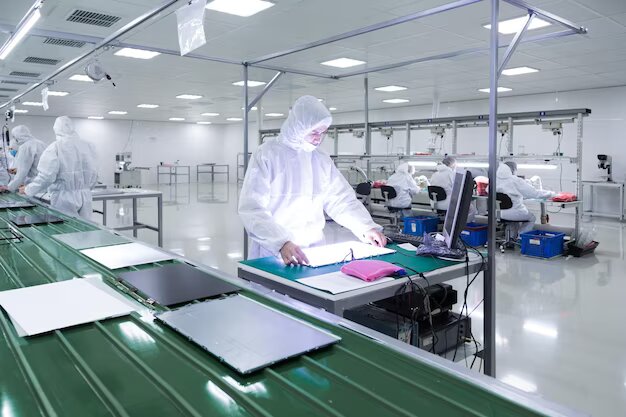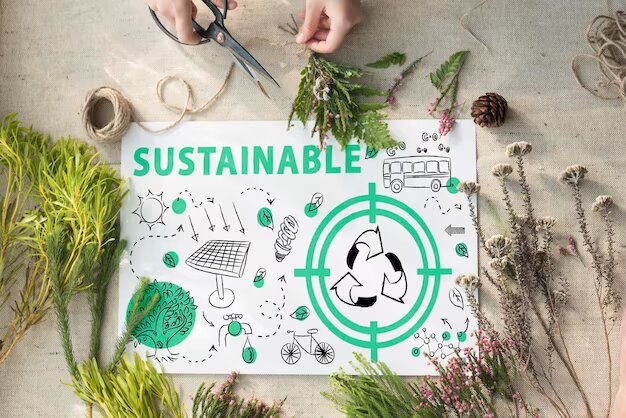Eco-Friendly Textile Production: How We Minimize Waste and Carbon Footprint

Sustainable Material Selection
In today’s world, where environmental concerns are at the forefront of global discussions, it is crucial for industries to adopt eco-friendly practices. Textile production, in particular, has a significant impact on the environment due to its extensive use of resources and generation of waste. This article aims to shed light on the importance of eco-friendly practices in textile production and delve into specific strategies that help minimize waste and reduce the carbon footprint.
Sustainable Material Selection: Sustainable material selection forms the foundation of eco-friendly textile production. By opting for materials that are environmentally friendly, such as organic cotton, hemp, and recycled polyester, manufacturers can significantly reduce their ecological impact. These materials offer several benefits, including reduced water consumption, lower pesticide usage, and decreased energy requirements during production. Additionally, the use of sustainable materials contributes to biodiversity conservation and minimizes the release of harmful chemicals into ecosystems.
Case studies have shown inspiring examples of successful implementation of sustainable materials in textile production. For instance, a renowned clothing brand incorporated recycled polyester fibers made from post-consumer plastic bottles into their garments, effectively reducing plastic waste while maintaining product quality. Such initiatives highlight the potential for sustainable material selection to drive positive change in the industry.
Efficient Production Processes

Efficient production processes play a vital role in waste reduction and carbon footprint minimization within the textile industry. Innovations and technologies have emerged that enable eco-friendly production techniques.
Waterless dyeing methods, for example, significantly reduce water usage and eliminate the discharge of chemical-laden wastewater into rivers and streams. Similarly, low-impact printing techniques minimize the consumption of water and energy while maintaining high-quality designs.
Leading companies in the textile industry have embraced these innovative technologies and implemented efficient production processes. By investing in state-of-the-art machinery and incorporating sustainable practices throughout their operations, they have demonstrated that eco-friendly production is both feasible and economically viable
Waste Reduction Strategies

Waste reduction is a critical aspect of eco-friendly textile production. The textile industry is notorious for generating substantial waste at various stages, including fabric scraps, cutting waste, and discarded garments. Implementing recycling and upcycling initiatives can effectively divert these waste materials from landfills and transform them into valuable resources.
In recent years, the textile industry has witnessed inspiring examples of waste reduction strategies. Some manufacturers have developed innovative recycling technologies that convert textile waste into new fibers or materials for further production.
Others have embraced upcycling by repurposing textile scraps and discarded garments to create unique, sustainable products. These initiatives not only minimize waste but also promote a circular economy within the industry.
Carbon Footprint Minimization

Understanding and addressing the carbon footprint of textile production is crucial for achieving eco-friendly practices. The production and distribution processes in the textile industry contribute to greenhouse gas emissions, primarily through energy consumption and transportation. By adopting measures to minimize carbon emissions, manufacturers can significantly reduce their environmental impact.
One effective strategy is the implementation of renewable energy sources in manufacturing facilities. Solar panels, wind turbines, and other renewable energy technologies can power textile production, reducing reliance on fossil fuels and decreasing carbon emissions. Additionally, optimizing transportation and logistics can lead to significant carbon footprint reduction. Streamlining supply chains, utilizing efficient modes of transportation, and embracing sustainable packaging solutions are key steps in this regard.
Collaboration and Certification

Collaboration between stakeholders is instrumental in promoting eco-friendly practices in textile production. Manufacturers, suppliers, industry associations, and policymakers must work together to drive change and implement sustainable solutions.
By sharing knowledge, resources, and best practices, they can create a more sustainable and resilient industry. Certifications and standards also play a crucial role in ensuring eco-friendly textile production. Certifications such as the Global Organic Textile Standard (GOTS) and Oeko-Tex provide guidelines and criteria for sustainable practices.
They enable consumers to make informed choices and encourage manufacturers to adopt environmentally friendly processes and materials. The widespread adoption of certifications and standards can raise industry standards and contribute to a more sustainable future.
Consumer Education and Awareness

Educating consumers about eco-friendly textile production is essential for fostering responsible consumer choices. By raising awareness about the environmental impact of the textile industry and highlighting sustainable alternatives, consumers can make informed decisions that support eco-friendly practices.
Strategies for promoting sustainable fashion include providing transparent information about the production process and materials used, encouraging clothing longevity through proper care and repair, and promoting second-hand and vintage fashion.
Brands that prioritize eco-friendly practices and consumer education have the opportunity to build trust, engage with environmentally conscious consumers, and drive positive change.

Eco-friendly textile production is a vital component of sustainability efforts. By minimizing waste and reducing the carbon footprint, the industry can significantly mitigate its environmental impact. Sustainable material selection, efficient production processes, waste reduction strategies, carbon footprint minimization, collaboration, certification, and consumer education all contribute to a more sustainable and responsible textile industry.
It is imperative for manufacturers, consumers, and stakeholders to prioritize eco-friendly practices, collaborate, and embrace innovative solutions. By doing so, we can create a future where textiles are produced in a manner that respects our planet’s resources and preserves them for generations to come. Let us work together to build a more sustainable and eco-conscious textile industry.
